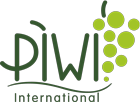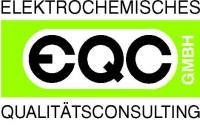Electrochemical measurements in wine, benchmark for quality?
in collaboration with

The growth of the plants depends on various environmental parameters such as light and water, but above all on the soil. Different prerequisites thus shape the quality of all products that humans consume by utilizing the chemically stored energy to maintain their bodily functions.
While conventional food tests only provide isolated information about ingredients or caloric content, the electrochemical measurement also records the portion in the food that is responsible for the structural work (the so-called. Entropy share) can deliver.
From a physical point of view, life processes can be seen as a chain of Redox reactions describe.
Derived from the main principles of thermodynamics, it can be shown that the quality of food is above that Redox potential can be represented:
The lower this value, the higher the quality and the neutralization Free radicals.
Two new joint research projects to curb the golden yellowing of the vine
On the occasion of the handover of the funding notices for two new joint research projects to curb the golden yellow yellowing of the vine (Flavescence dorée = phytoplasmosis), which are coordinated by the vine protectors and vine breeders of the Julius Kühn Institute at the Geilweilerhof site in Siebeldingen, the JKI published the following homepage announcement.
Federal Minister Klöckner hands over funding notices for new JKI research projects on quarantine diseases in vines and fruit
On Monday (April 12th, 21st), Federal Minister of Agriculture Julia Klöckner handed over the grant notices from her ministry for the two new research projects "VectoScreen" and "PhytoMo" via video. In the am Julius Kühn Institute (JKI) in Siebeldingen The projects worked on are about the diagnosis of flavescence dorée, in English golden yellow, and the monitoring of the pathogen causing this vine disease and the insects that transmit it. The disease is caused by a bacterium without a cell wall, a so-called phytoplasm. This quarantine pest organism, which is worth fighting, or its vector insect, the American vine leafhopper, are finding better and better conditions in local wine regions. Diseased plants and pathogens are subject to transport bans within the EU and other measures that help prevent the introduction and spread of quarantine pathogens. Both projects are funded by the BMEL as part of the tender "Innovations to avoid the introduction and spread of regulated and new harmful organisms in plants".
High-resolution 3D phenotyping of the root system of the grapevine using X-ray computed tomography
The Julius Kühn Institute and the University of Nottingham in Great Britain examined the roots of young potted vines of 'Calardis Musqué', 'Villard Blanc' and V3125 ('Schiava Grossa' x 'Riesling'). Non-invasive X-ray micro-computed tomography (X-ray µCT) methods were used to study the phenotypic variation of the complex three-dimensional (3D) architecture of vine roots as a function of genotype and soil. Lignified cuttings were cultivated in polypropylene columns filled with two different types of soil, clayey loam and sandy loam, for 6 weeks.
It could be shown that the individual root parameters such as B. Root length and number of side roots are clearly specific to the grape variety, i.e. genetically determined, and are less dependent on the type of soil.
Which sensory style of PIWI wines promises success?
DLR Rheinpfalz, Institute for Viticulture and Oenology, Marc Weber, Prof. Dr. Ulrich Fischer German Wine Institute, Ole Kohlmann
On the occasion of the 74th Viticulture Days 2021
Actually, they all have trumps in their hands, the mushroom-resistant grape varieties, or PIWIs for short. It has been proven that significantly reduced plant protection is required in order to harvest ripe and healthy grapes, reduced crossings protect the soil structure and lower workload and costs for plant protection, be it ecological or conventional, save the winemaker's budget. So it is surprising why in the Palatinate only 3.2 % of the vineyard area is planted with PIWIs, of which the regent alone denies 2.2%. In Rhineland-Palatinate, there are only 2.9% of the vineyard area, which is surprising, because they are predestined for steep and terraced locations where crop protection is more labor-intensive and cost-intensive. If you ask the winemakers about their reluctance to plant PIWIs, they complain about a lack of interest on the part of consumers and trading companies, while the wineries and consumers complain about a limited supply. In order to resolve this contradiction, a sub-area of the nationwide VITIFIT project of the Federal Ministry of Agriculture is concerned with improving the style of the wines made from PIWI grape varieties and their chances of success in marketing.
Conclusion: In terms of their quality potential, wines made from PiWi grape varieties are on par with the standard grape varieties. However, there is still a lack of experience as to how they can best be expanded. Consumer preferences and the derived preferred or rejected sensory attributes help here. For the future, the question arises whether PIWI wines should be good sensory “copies” of the styles of the standard grape varieties or whether they should show an independent, different, but recognizable profile as new and different.
NOVISYS - New grape varieties with minimal cut in the trellis

The most important facts from research and practice
funded by the Federal Ministry for Education and Research
Extract on page 20:
WINE QUALITY
It is no longer a secret that new grape varieties, the PIWIs, can be used to produce high-quality wines. This could also be shown in the framework of the novisys project for wines from the minimal cut in the trellis. The level of yield, the state of health of the grapes and the correct time of harvest are decisive for the quality and type of wine. Excessive yields and harvesting too early in particular quickly lead to unripe, thin and bitter wines with minimal pruning in the trellis, which are associated with low color in red wines. For this reason, a targeted reduction in yield (BBCH scale: 75) in the first few years of the conversion is strongly recommended. In addition, the smaller berries in the minimal cut in the trellis lead to an increased proportion of berry skin and thus to a higher berry skin / pulp ratio.
Wines from the minimal cut in the trellis benefit from this. With a moderate yield level and harvest time adapted to the ripeness, aromatic, fragrant and slim white wines as well as tannin-rich and color-intensive red wines can be produced in the new cultivation system.
Source:
IMPRINT
Novisys research project Project leader: Prof. Dr. Reinhard Töpfer
Julius Kühn Institute
Federal Research Institute for Cultivated Plants (JKI) Institute for Vine Breeding Geilweilerhof Geilweilerhof
www.zukunft-weinbau.de
Consumer-oriented stylistics for PiWi wines
... as a contribution to a higher market acceptance
First results from the joint project VITIFIT
Marc Weber, Jochen Vestner, Christoph Kiefer, Gergely Szolnoki, Ulrich Fischer
Expert interviews: producers and dealers
Method: Individual interviews:
Sample:
- 48 producers
- 17 dealers
Cooperation: Marc Dressler, Christine Freund (questions and results)
⇒ Objective: gain attitudes and reasons for and against PIWI grape varieties and potential solutions.
Sensor-based detection of leaf roll sickness on grapevines directly in the field
Sensor-based detection of leaf roll sickness on grapevines directly in the field
The leaf roll disease of the grapevine is a viral disease that spreads worldwide and causes great economic damage. Since the disease cannot be treated directly in the field up to now, prevention is crucial in virus management: Infested sticks must be recognized and cleared early on. However, many plants develop only mild symptoms or no symptoms. The JKI has tested a sensor-based early detection system for leaf roll disease in the field with the Fraunhofer Institute IFF, the Geisenheim University and the University of Hohenheim. With hyperspectral cameras and an adapted phenotyping pipeline, infected vines can be detected earlier than before and suitable measures can then be initiated.
Source: Julius Kühn Institute
read more (english)
CO2 and crop protection savings through PIWI cultivation by Fred Strasser

F. Strasser, Dipl Ing Agr ETHZ, organic plant teacher and M. Coray Contact: fredi-strasser@stammerberg.ch
It was only in the 1980s that science and practice recognized the importance of resistance for environmentally friendly cultivation. As a result, cross breeding and cultivation in pioneering companies increased again with special permits. Switzerland's mandatory list of grape varieties initially prevented free cultivation, which was only legitimized in 1995 by abolishing this list. Today, the goal of creating the most natural vineyard possible using resistant grape varieties is open to every Swiss winemaker. This is important for vineyards where thunderstorms and nighttime dew formations cause the infection pressure of the downy mildew to be very high and make short intervals between the frequent treatments not only necessary in organic winegrowing. This allows a high contribution to the reduction of pollution of soil, air, environment, flora, fauna, winegrowers and the climate.
Plant protection and biodiversity in agro-ecosystems
Statement of the Scientific Advisory Board of the National Action Plan on the Sustainable Use of Plant Protection Products at Federal Ministry of Food and Agriculture
A new terrifying statement on insect decline and bird death in Germany.
If you are still looking for arguments for growing PIWI grape varieties, you will find them on pages 21, 24 and 25. In the opinion, fungus-resistant varieties are presented as the basis for a new integrated crop protection in agriculture:
6.4 Promotion of integrated crop protection processes including the availability, cultivation and market launch of resistant varieties
Integrated plant protection (IPS) measures rely primarily on a variety of methods used to control harmful organisms, such as: B. use of mechanical methods for weed control, use of crop rotation effects, or the cultivation of less susceptible or resistant varieties and adaptation of sowing times to the location. Such measures should be the first choice, but they are not used sufficiently for various reasons. It can be assumed that the use of chemical pesticides is often preferred to alternative methods because they are easy to use and inexpensive and represent conventional practice. We therefore recommend that farmers' training and advice be geared even more strongly towards integrated crop protection than before.
Life cycle assessment of Swiss wine from ÖLN and organic production
Study by Sarah Wettstein, Matthias Stucki, Matthias Meier, Peter Schumacher, Jürg Buchli on behalf of the Federal Office for the Environment (FOEN)
In addition to animal foods, the consumption of alcohol and other luxury foods contributes significantly to the environmental impact of nutrition. In 2014, with 35 liters per capita and year after beer, wine was the most consumed alcoholic beverage. The management of vineyards is associated with a high consumption of resources and energy, as well as with production-related emissions to the air, soil and water. Emissions were reduced with the introduction of integrated production (IP). Organic production goes one step further by banning chemical-synthetic pesticides and increasing the cultivation of fungi-resistant (PIWI) varieties.
The aim of the present study is to assess the environmental impact of wine production in Switzerland with the two production systems mentioned and the cultivation of PIWI varieties using an ecological balance sheet and to highlight the most important influencing factors. In addition, a biodiversity assessment was carried out to show the effects of different production systems on biodiversity.
Fungus resistant grape varieties as a suitable alternative for organic wine production: Benefits, limits, and challenges
Article by Karine Pedneaulta and Caroline Provost in the journal Scientia Horticulturae
Abstract:
Areas dedicated to organic wine production have significantly increased over the last few years. The vast majority of organic wine is made from Vitis vinifera varieties that are highly susceptible to fungal diseases and pests, making organic management difficult for growers. Depending on the growing area, 20-70% of organic growers declare issues with fungal diseases in Europe. Recently, fungus-resistant grape (FRG) varieties have been recommended as the most suitable choice in organic viticulture, especially in areas where disease pressure necessitates high rates of fungicides. FRG varieties could contribute to improved disease management in organic as well as conventional viticulture, reduce production costs and decrease copper accumulation in soils. Recently, many FRG varieties presenting advantageous agronomic attributes and enological characteristics have been developed in North America and Europe for conventional and sustainable farming. In this review, we present an overview of the benefits and limits associated with FRG varieties in addition to the current knowledge regarding berry and wine composition, canopy management, and winemaking challenges and practices.
© 2016 Elsevier BV All rights reserved.


